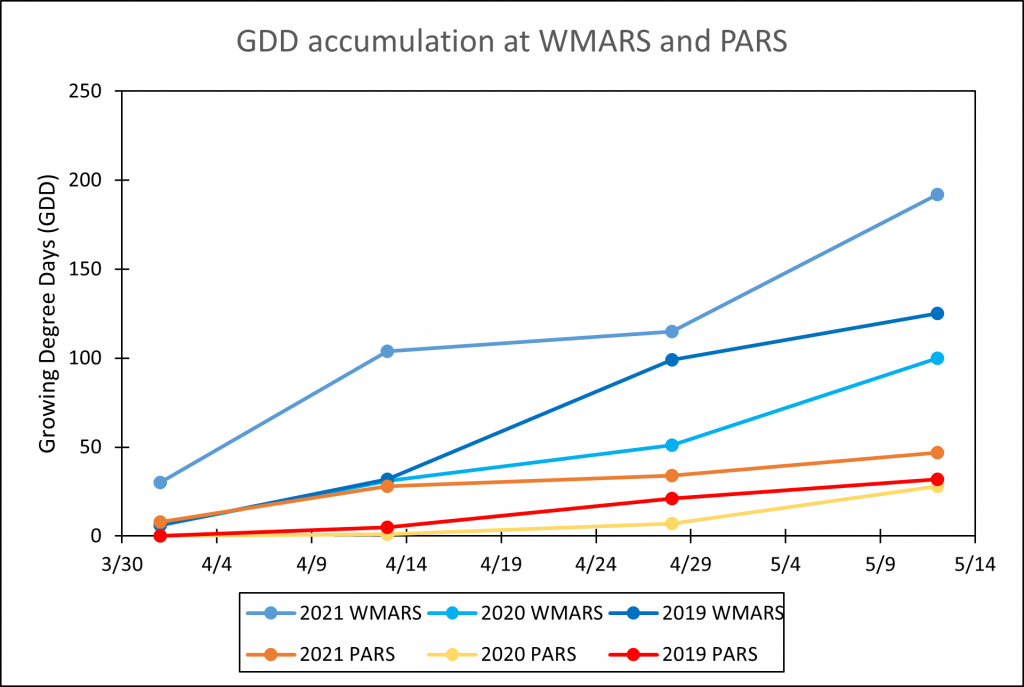Grape Cultivar Developmental Stages: May 12, 2021
Phenology
At the West Madison Agricultural Research Station (WMARS) in Verona, WI, shoot development varies widely across all cultivars (Table 1). Marquette is the most advanced with most buds at E-L* Stage 9 (“2 to 3 leaves separated from tip; shoots 1-1 ½ ” (2-4 cm) long”). Itasca, Frontenac, and La Crescent range in development from Stage 7 to 9 (“First leaf separated from tip” to “2 to 3 leaves separated from tip; shoots 1-1 ½ ” (2-4 cm) long”). Brianna and Crimson Pearl are a step slower, ranging from Stage 4 to 7 (“Bud burst with leaf tips visible” to First leaf separated from tip”). As expected, Petite Pearl buds are the slowest to move in the spring and currently range from Stage 3 to 4 (“Wooly bud” to “Bud burst with leaf tips visible”). The warmer temperatures expected next week (May 16-21) will result in substantial shoot growth for all cultivars, putting us close to time for shoot thinning.
Table 1. Phenology and development of cold climate interspecific hybrid grape cultivars at the West Madison Agricultural Research Station in Verona, WI, as of May 12 2021.
| Cultivar | E-L Stage* | Description |
| Brianna | 4-7 | Bud burst with leaf tips visible to First leaf separated from tip |
| Crimson Pearl | 4-7 | |
| Frontenac | 7-9 | First leaf separated from tip to 2-3 leaves separated, with shoots 1-1½ “ (2-4 cm) long |
| Itasca | 7-9 | |
| La Crescent | 7-9 | |
| Marquette | 9 | |
| Petite Pearl | 3-4 | Wooly bud ± green showing to Budburst with leaf tips visible |
*E-L stands for the Eichhorn-Lorenz growth stages scale to describe grapevine development.

Brianna 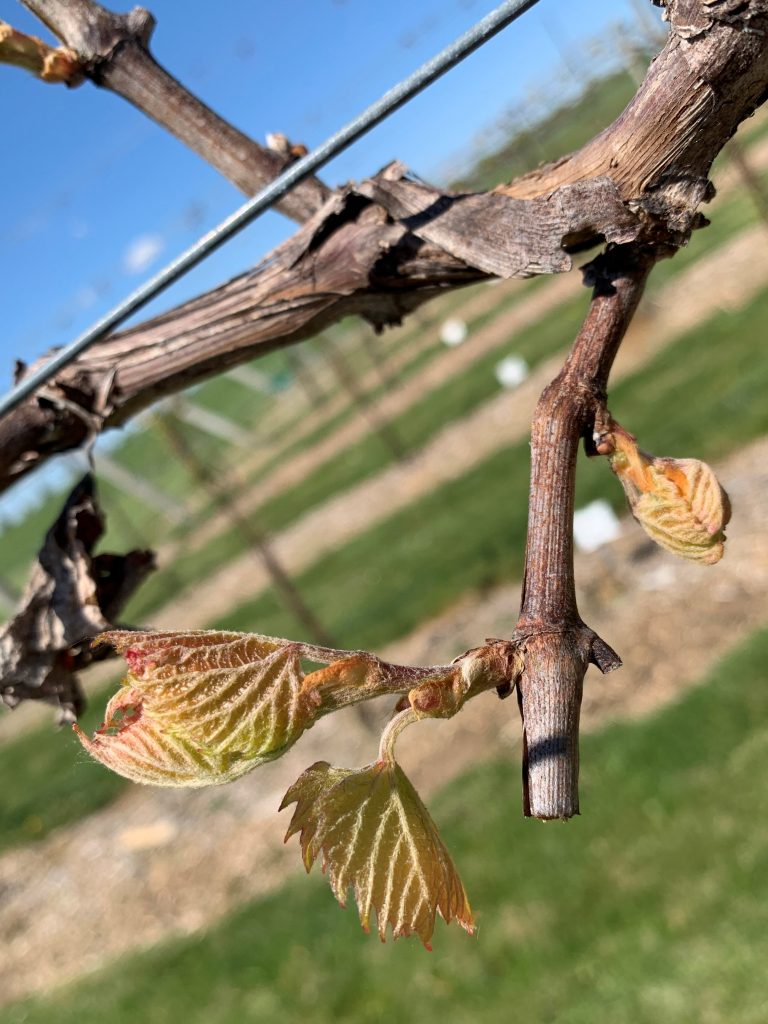
Crimson Pearl 
Frontenac 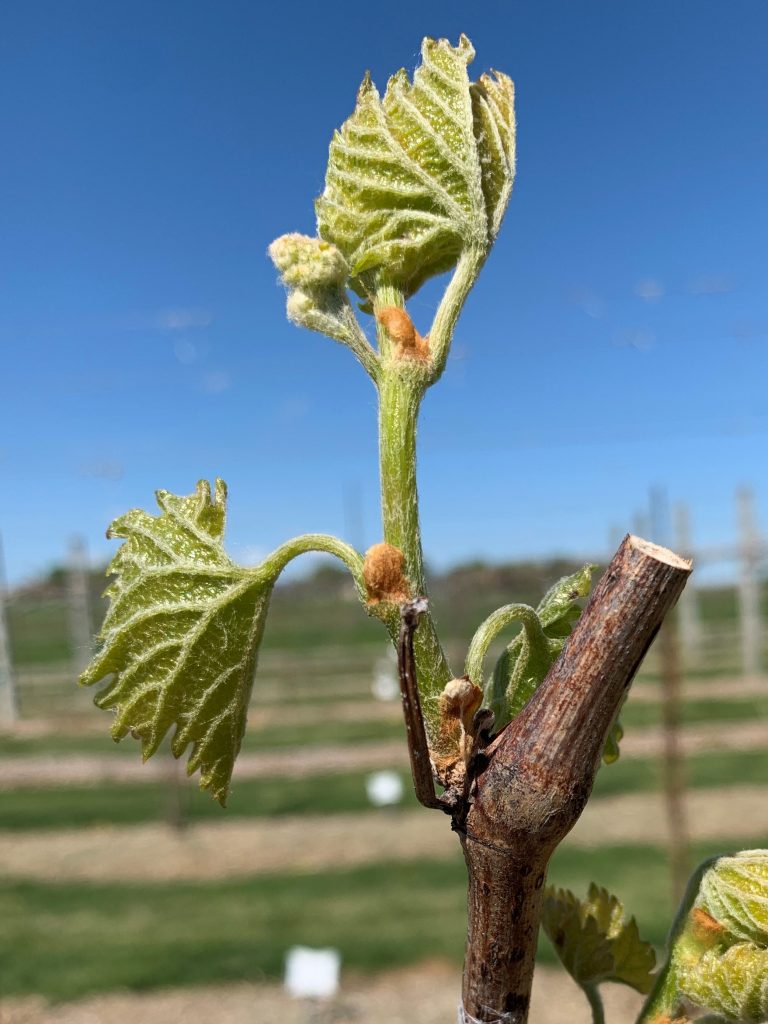
Itasca 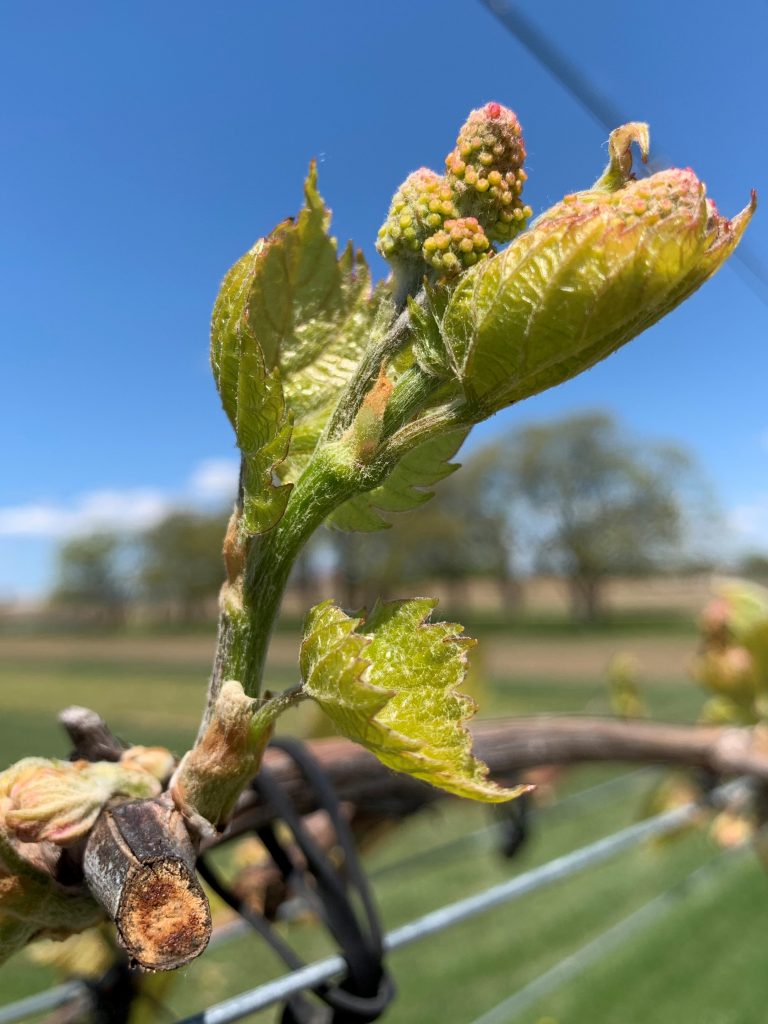
La Crescent 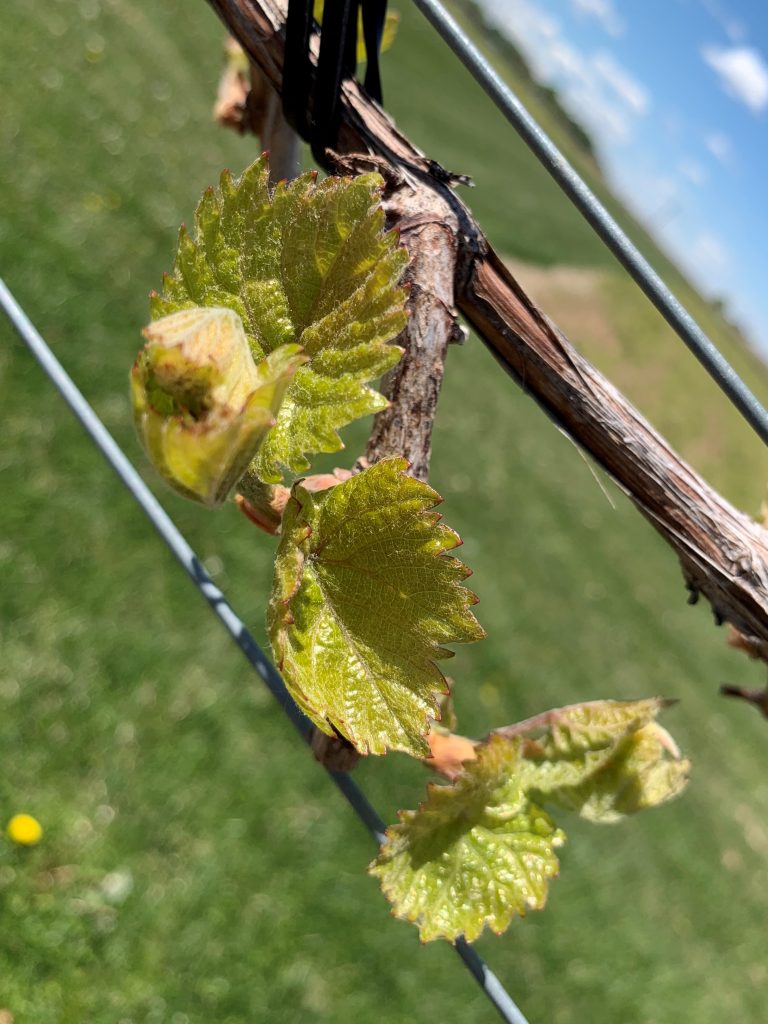
Marquette 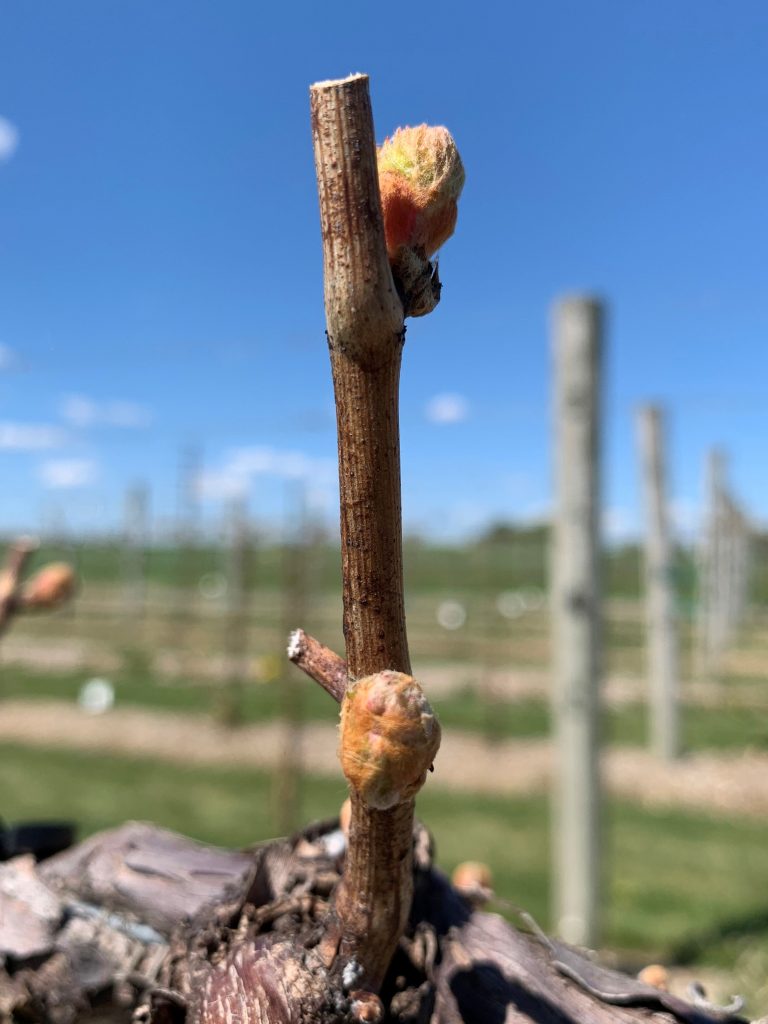
Petite Pearl
Growing Degree-Day (GDD) Accumulations
Depicted in Figure 1 and listed in Table 2 are the GDD accumulations from April 1 to May 12 for this year and the past two seasons. Degree-days were calculated using a base 50 °F, starting on April 1 as a biofix date. We use the NEWA website and the “BE” (Baskerville-Emin) calculation. This method uses a sine wave instead of a simple average temperature calculation, which is thought to provide a more accurate estimation of degree-days. You can visit the NEWA “About degree days” page to learn more about the concept of degree days and the formulas used in calculations.
(http://newa.cornell.edu/index.php?page=about-degree-days).
Currently at WMARS, the 2021 season GDD accumulation has has picked back up over the last two weeks, resulting in this season being notably ahead of either 2020 or 2019. The current GDD accumulation as of May 12 at PARS is slightly higher than at this time in the two previous years. Overall, PARS remains much cooler than WMARS and has not yet experienced a major warming.
Table 2. Growing degree day accumulation as of May 12, 2021 (April 1 biofix date; base 50 °F BE*) at the West Madison Agricultural Research Station (WMARS) and the Peninsular Agricultural Research Station (PARS).
| Location | 2021 | 2020 | 2019 |
| WMARS | 192 | 100 | 125 |
| PARS | 47 | 28 | 32 |
*BE = Baskerville-Emin calculation method
